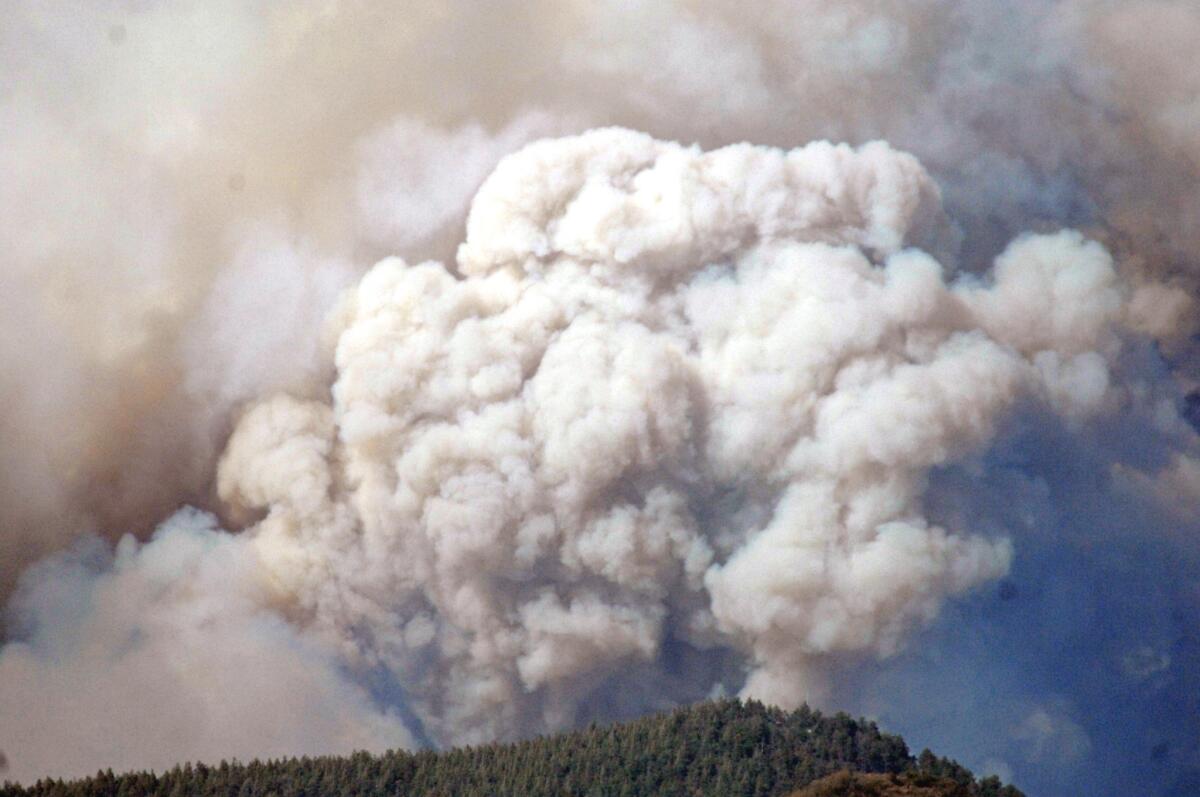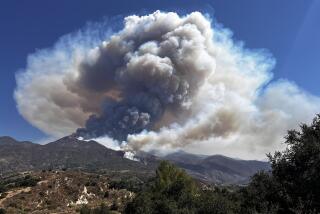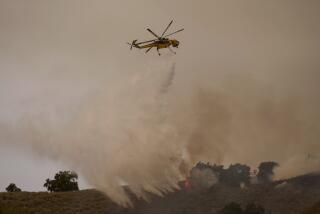Opinion: Welcome to the era of climate-changed fire seasons

With triple-digit temperatures expected in parts of Southern California on Tuesday and Wednesday, it seems like an appropriate time to welcome you all to the new climate-warmed fire season. Well, everybody except Sen. Marco Rubio (R-Fla.), who doesn’t believe the scientists who say human actions are the prime driving force behind global warming. (A philosophical side note: If the scientists didn’t believe in Rubio, he’d still exist, wouldn’t he?)
The U.S. Forest Service and the Interior Department recently advised Congress that they expect a combined $470-million shortfall in their $1.4 billion wildfire budgets this year as a direct result of the changing — and elongating — nature of fire season. Over the last 30 years, federal officials said, the fire season has extended by more than two months, and the amount of acreage burned each year has about doubled. With continued encroachment of housing developments into wild lands, more property and people are at risk, especially with prolonged droughts such as the one parching California.
“With climate change contributing to longer and more intense wildfire seasons, the dangers and costs of fighting those fires increases substantially,” said Rhea Suh, the Interior Department’s assistant secretary of policy, management and budget.
And it’s not just this year. If the projections pan out, this would be the seventh out of the last 12 budgets in which federal officials have had to scramble to cover unanticipated higher costs of fighting wildfires. Yes, that suggests they need to put more money in that budget, but the problem is that means cutting from somewhere else.
As it is, to meet the shortfalls agency officials borrow from budget lines meant to support reforestation, thinning and controlled burns aimed at mitigating wildfires, and cutting forestry personnel to add firefighters. So fighting these fires affects more than just the burn zones.
And it’s serious business. Last year, wildfires killed 34 firefighters, burned 4.1 million acres and destroyed more than 1,000 buildings, federal officials said. Since 2000, the federal cost of fighting wildfires has exceeded $1 billion in all but three years.
More to Read
A cure for the common opinion
Get thought-provoking perspectives with our weekly newsletter.
You may occasionally receive promotional content from the Los Angeles Times.











